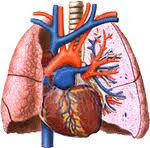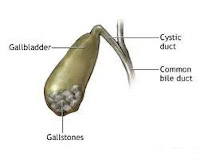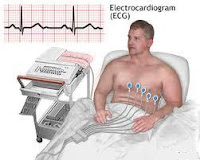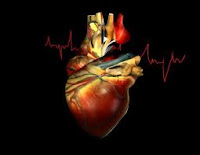How is hyperlipidemia?
Treatment goalsIf it is necessary to treat, apply the following treatment goals for fats in the blood:
- Total cholesterol less than 5.0 (mmol / L)
- Relationship between the values for total cholesterol and HDL cholesterol (good cholesterol) should be less than 4
- LDL cholesterol should be lower than 3.0 (mmol / L)
- Triglycerides should be less than 2.0 (mmol / L)
- HDL cholesterol should be higher than 1.0 (mmol / L)
General treatmentTotal risks for heart disease are essential for the gain of fat-lowering treatment. A slightly elevated cholesterol is isolation tungveiende no reason for treatment; it is the sum of risk factors is basic. That is, the more of the factor's hyperlipidemia, hypertension, diabetes, genetic predisposition, smoking, obesity, lack of exercise that is, the more important it is to manage to avoid the development of cardiovascular disease.
All treatments start with a change of diet. The next step in treatment is the use of fat-lowering drugs, called statins. In some cases, it may also be appropriate to use triglyceride funds.
Dieting recommended for obesity. Smoking is a major risk factor for vascular disease of the heart and smoking cessation is therefore, important. Regular exercise improves the composition of fats in the blood. It is often necessary to get a permanent weight loss. The goal is at least 30 minutes of exercise 2-3 times a week.
The isolated elevated triglycerides recommended low alcohol intake, caution with coffee, weight loss in overweight people.
What if you have elevated cholesterol, but otherwise no other risk factors?
- When cholesterol levels between 6.5 to 7.9 and LDL-cholesterol of 5.0, or a relationship between LDL and HDL over 5, the non-drug therapy
- Cholesterol of 8.0 is treated first with drugs.
- If LDL-cholesterol continues to be above 5.0, or the relationship between LDL and HDL continues to be above 5 at follow-up, drug therapy should be considered.
- Women are not treated medically until after they have ceased to menstruate.
Self-TreatmentThe restructuring of lifestyle should continue for at least six months before taking the drug therapy. The exceptions are patients with heart disease, which often starts with drug treatment and lifestyle change simultaneously.
Dietary adviceThe amount of saturated fats in food is reduced to less than 10% of the total energy (calorie intake). The main sources of saturated fat in the diet are meat, meat products (15-20%), margarine and milk products (40%). Limit your total fat intake to 30% of energi-/kaloriinntaket Cover 50% of energy intake from carbohydrates - cereals, fruits and vegetables. Increase your intake of fatty fish, soft margarines and olive oil. Have a moderate alcohol consumption. A intermediate consumption of nuts, 50-100 g daily, can reduce cholesterol levels by approx. 0.3 mmol / l.
PharmacotherapyCholesterol-lowering medications given to patients without known heart disease if they are at high risk of heart attack.
In patients with known cardiac disease or symptomatic disease that confined Halske, stroke, or poor blood circulation, offered cholesterol-lowering drugs to patients with cholesterol levels below 5.5. The decision on the treatment a physician and patient assess the benefits, and the side effects and disadvantages of treatment can have. Treatment is often up to 65-75 years of age. The benefit in the elderly is under discussion.
Familial hypercholesterolemiaIt is reasonable to believe that adult family members with LDL-cholesterol above 5.5 have familial hypercholesterolemia. Treatment Start from 18 years of age or earlier are implemented at high risk for vascular disease of the heart.
Isolated elevations in triglyceridesConsideration should be given medical treatment when the condition in the family, when the condition is combined with early heart disease and when triglycerides are over 10, because. Increased risk of inflammation of the pancreas.











































